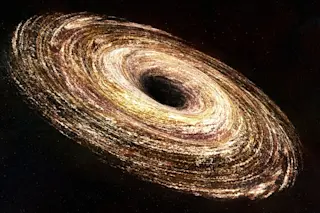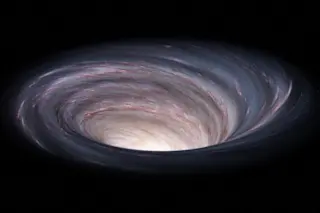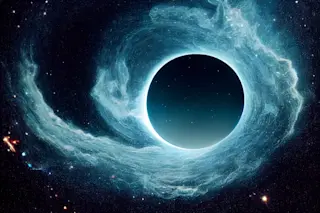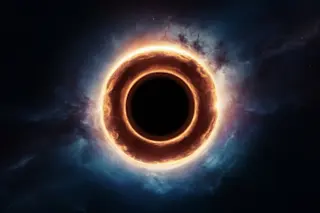Nothing is stranger than a black hole. The darkened corpse of a former sun from which not even light can escape, a black hole forms when a massive, dying star crumples under its own gravity. It shrinks until all of its mass is contained in an infinitely dense point, called a singularity. Its gravity is so intense, if anything ventures within an invisible border around the singularity, called the event horizon, it cannot escape.
Just outside the event horizon whirls high-temperature material — the accretion disk — waiting to “fall into” the black hole like water spiraling down a drain. The disk emits X-rays, a high-energy form of light, because the matter moves so fast that its friction generates a lot of heat. Jets of energy and matter, whose formations remain a mystery, can stretch away from the accretion disk for hundreds of thousands of light-years.
For more on black ...















